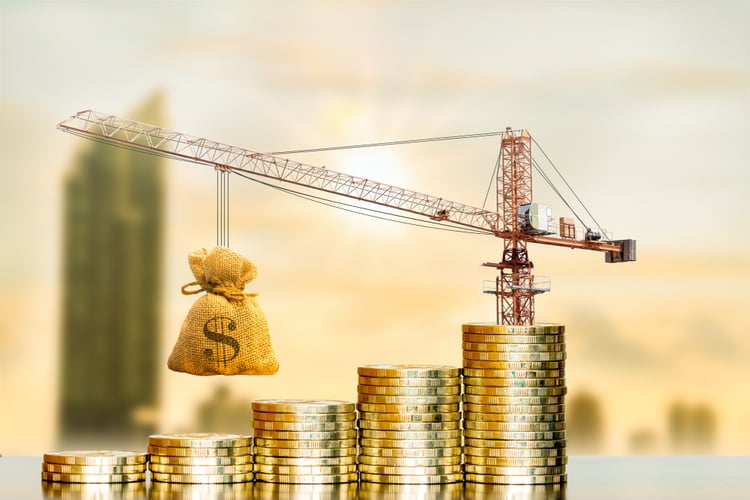Using C-Pace Loans for Zero Down Energy Upgrades in Buildings

Many energy efficiency measures have a low upfront cost with respect to their lifetime savings, which shortens their payback period. For example, LED lighting upgrades have a typical payback period of less than three years, and leading brands offer warranty terms of five years or more. However, many buildings in NYC will need deep retrofits to reach the emission limits in Local Law 97 of 2019. A deep retrofit is a complex project with major upfront costs, and its payback period may exceed 10-15 years.
Even if a building owner has the funds for a deep retrofit, an expense of that magnitude can disrupt cash flow for years. Using business loans is also possible, but their repayment term is normally below 10 years - less than the payback period of a major retrofit. The energy savings are not enough to pay the loan by themselves, and the owner must cover the difference.
Get professional energy modeling services for your building retrofit.
C-PACE financing is an attractive option, since the repayment term for commercial buildings can be up to 30 years. This makes C-PACE loans viable for deep energy retrofits, which will be necessary to avoid carbon penalties in many NYC buildings. In these cases, the loan can be paid not only with energy savings, but also with the avoided emission penalties. In this article, we will use a simplified example to compare C-PACE financing with a conventional loan.
Financing a Deep Energy Retrofit With a Conventional Business Loan

We will assume that a Business Group B building has an area of 300,00 sf, and the following energy consumption:
- 7,200,000 kWh per year
- 90,000 therms of natural gas per year
Assuming an electric tariff of $0.20/kWh and a natural gas price of $1 per therm, this building pays around $1,530,000 million in energy bills. The emissions footprint is also high - 2558.52 metric tons of CO2 equivalent per year, according to the emission factors in Local Law 97.
The emission limit is 2,538 tCO2-e in 2024, and 1,359 tCO-e in 2030. While the 2024 target can be reached with relative ease, the 2030 target is a major technical challenge. To avoid LL97 penalties in 2030, this building must cut total emissions by over 46%. This could be accomplished with a major retrofit project that cuts gas and electricity consumption by half:
- 3,600,000 kWh per year
- 45,000 therms per year
- $765,000 in energy bills per year
- 1279.26 tCO2-e per year (below the 2030-2034 limit)
After the retrofit, the building would be saving $765,000. However, according to a study by the Rocky Mountain Institute, a deep energy retrofit costs between $25 and $150 per square foot. Even with an optimistic cost estimate of $7,500,000 (assuming $25/sf), the payback period of this project is 9.8 years.
If you get a $7.5 million loan at 3.5% interest with 10-year term, your annual payments will add up to $889,973. This means the savings of $765,000 are not enough to cover the loan, and you must pay the difference during 10 years - this represents around $1.25 million in total.
Financing a Deep Energy Retrofit With C-PACE

If you use a 30-year C-PACE loan with an interest rate of 5% for the project above, the savings are much higher than the annual payments. You will start saving $765,000 the first year and you will pay $483,139, leaving net savings of $281,861 in your pocket. While the conventional loan leaves you with a negative cash flow of $1.25 million after 10 years, you accumulate $2.8 million in net savings with C-PACE financing.
The downside of a longer loan is paying more interest over time, but it can be covered fully with the savings achieved. On the other hand, a shorter loan is paid off earlier, but you must assume negative cash flow for its entire duration. Also, consider that net savings can be reinvested right away with the C-PACE loan, while there is an opportunity cost when covering the difference in a shorter loan.
In the case of NYC, the avoided LL97 penalties can also be used to cover any loans used to retrofit buildings. The property in this example will be saving $5,498/year between 2024 and 2029, and $321,470/year between 2030 and 2034. All the funds that would have been paid as penalties can be used for debt service.

Michael Tobias
Michael Tobias, the Founding Principal of NY Engineers, currently leads a team of 150+ MEP/FP engineers and has led over 4,000 projects in the US
Join 15,000+ Fellow Architects and Contractors
Get expert engineering tips straight to your inbox. Subscribe to the NY Engineers Blog below.

